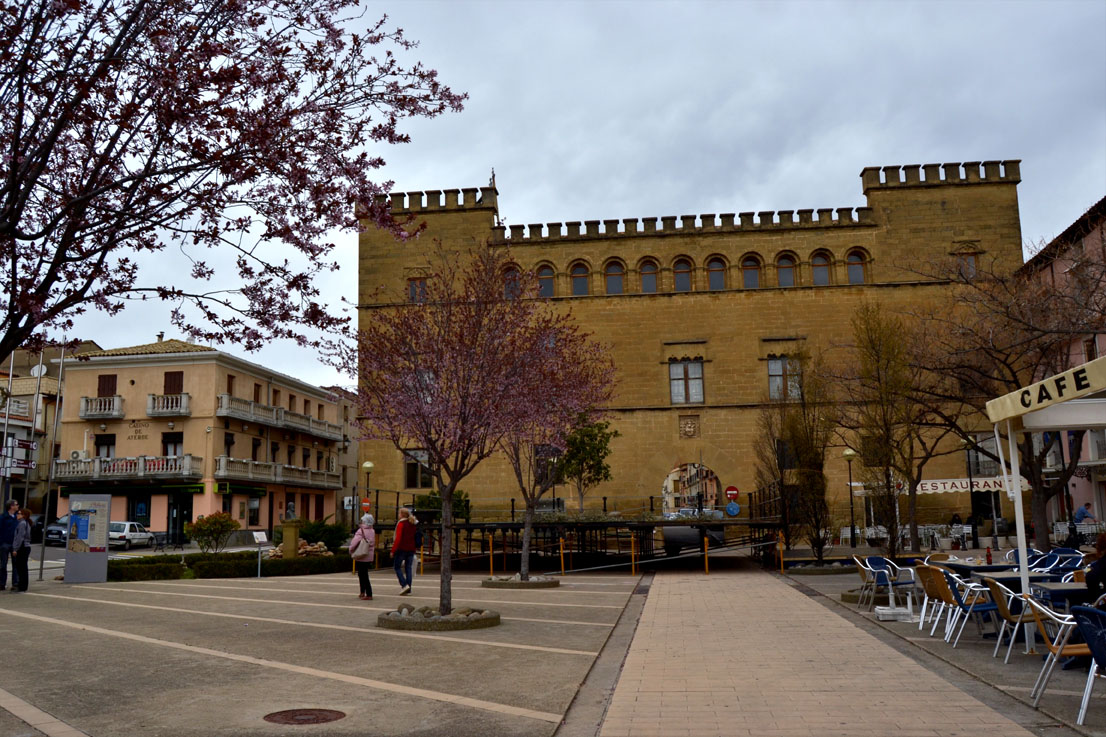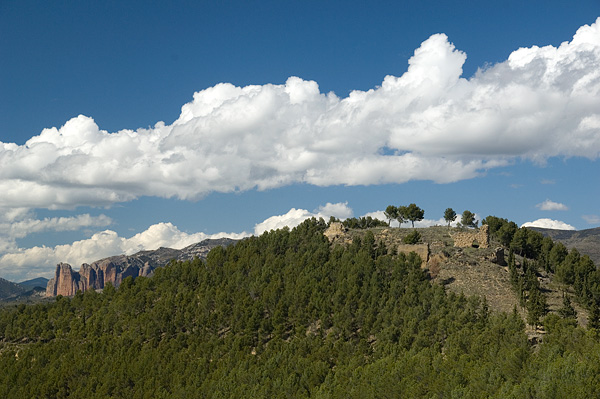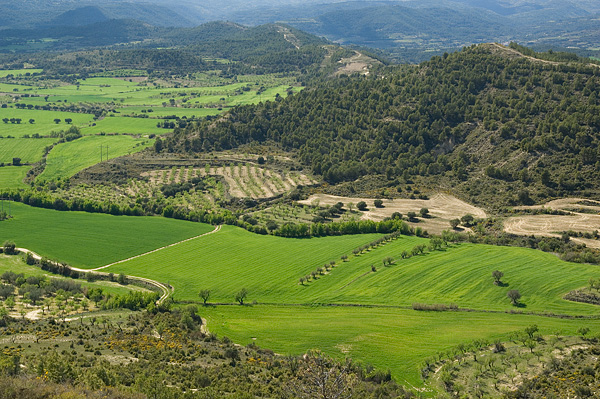
Losanglis is a quaint village in the municipality of Ayerbe. It is located very close to the Badiello River, in a valley crossed by the Gállego River.
Its Parish Church of Santiago el Mayor, with a slender Renaissance-style bell tower, rises above the village.

Losanglis celebrates its main festival in honor of St. James on July 25th, and a minor festival is celebrated in October in honor of St. Peter of Alcantara.

Among its architectural heritage is its church dedicated to Santa Ana, the 18th-century washing fountain, and the boundary cross, from the same period.
The San Mitiel tower sits on a hill between the village of Los Corrales and Fontellass. Due to its structure and layout, it is similar to other towers in the area, such as the watchtower in Tormos and the Islamic wall of Huesca (9th century). The tower, while difficult to reach, is worth the effort for anyone interested in its historical heritage.

One of the longest trails in the region, in terms of both distance and duration, passes through the village, a short stop along the way. This is the trail that runs from the Sotonera reservoir to Sarsamarcuello; from one of the southernmost areas of the region to a marked northern point, giving hikers the chance to experience the profound contrasts between different landscapes and relatively close villages.

Ayerbe has historically played a role in commerce as a crossroads and meeting place. This tradition continues today, and the town is considered the hub of an entire area called the “Reino de los Mallos” (Kingdom of Mallos).
Visiting Ayerbe is to discover its magnificent square where the impressive Palacio de los Urriés (15th to 17th century) awaits. Although this building is one of the town’s most iconic, there are other Aragonese Renaissance style noble houses in Ayerbe, like the “Casa de los Luna” and the “Casa Normante”.

The historical center of Ayerbe, located around the “high” Plaza Aragón and the “low” Plaza de Ramón y Cajal, gravitates towards the Palacio de los Urriés and the clock tower, a public bastion built in 1798 both for the residents and to distinguish the village.
And speaking of towers: Ayerbe is unique in that it has a church with no tower, a tower with no bells, and a bell with no clock…
The Church of San Pedro at the entrance of the town, built from the 16th to 19th centuries, features a beautiful 17th-century doorway.

On the other side of the town, almost at its end, we find the beautiful Romanesque San Pedro tower, a 12th-century Artistic Historical Monument and the only remaining trace of the town’s original church.
The Ramón y Cajal Interpretation Center is located on one of the town’s main streets in the former house where the prominent Nobel Prize winner who was born in Petilla de Aragón lived for a period during his childhood. The ground floor of the center also functions as the local Tourism Office.

Visiting Ayerbe means discovering its culinary delights: cakes, sweets, mushrooms...all easily available for you to take home as a delicious souvenir.
Outside of town you can visit the Fuente de los Tres Caños, in the direction of Riglos, and the Sanctuary of the Virgen de Casbas, in the direction of Biscarrués. The latter dates from the 18th century and conserves a complete iconographic set of mural paintings inside. It can be visited and a stroll around the outside and inside of the church is well worth the trip.
The Chapel of San Miguel, a bit farther from town, stands guard over Ayerbe from the top of a hill. This Romanesque church was expanded during different periods leading up to the 20th century.

Ayerbe is also home to the Chapel of Santa Lucia, a Romanesque 12th-century building, and the 17th-century Chapel of San Pablo.
Ayerbe’s annual festival calendar is packed with a range of options. The town organizes bonfires on the last Sunday of January in honor of St. Peter; the pilgrimage to the Virgen de Casbas takes place on the first Sunday of June; and the town’s main annual festivals are on September 8th in honor of St. Leticia, in a celebration that includes a Gigantes y Cabezudos (Giants and Big Heads) exhibition and the “bulls of fire”. The Enclavación, a reenactment of the Crucifixion of Jesus Christ that culminates with the Rompida de la Hora (Breaking of the Hour), declared a Festival of Tourist Interest in Aragon, is a can’t-miss event during Easter Week.

As the region’s commercial hub and given its models for driving the region forward, Ayerbe is a town that never stops. Proof are the Pre-Pyrenees Rural Alternatives Fair, the Mycological Days, the Short Film Competition, the Renaissance Fairs…along with a host of events that make the town an outstanding place to visit.